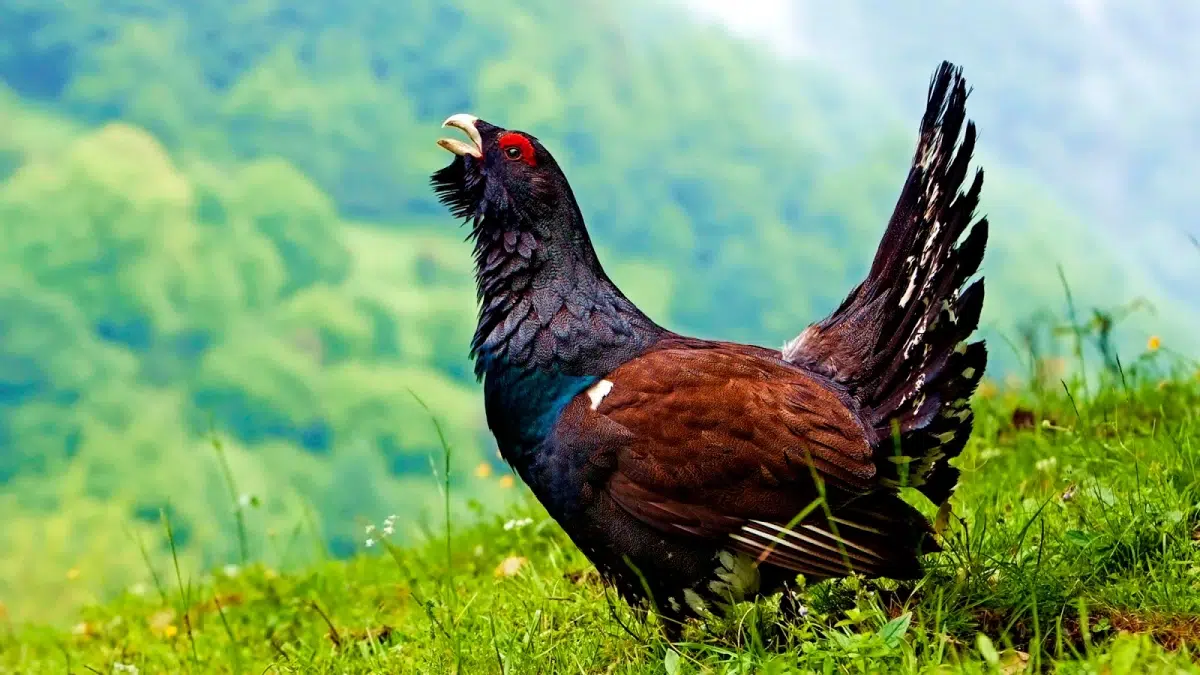An article in the magazine Evolutionary applications explains it: genetic rescue that will save from become extinct already Cantabrian capercaillie. A scientific team shows that the Cantabrian capercaillie population has clear symptoms of genetic depression due to endogamy j I would need a genetic rescue. The population of Cantabrian capercaillie of the mountain range has chained decades of decline that seems unstoppable Today the species is threatened with extinction. The team of scientists has just published an article in the journal Evolutionary Applications indicating that the population could be involved in an extinction spiral linked to inbreeding and genetic depression. In similar situations there are successful examples of genetic rescue operationsinvolving the introduction of individuals from other populations alleviates the negative effects of inbreeding. However, the Cantabrian capercaillie It is considered a unique subspecies (Tetrao urogallus cantabricus), so the possibility of admixture with other populations has not been assessed. Today it is known that this classification has no scientific basis and the article suggests that the supposed exclusivity of the Cantabrian capercaillie has been a trap for its conservation.N.
He grouse It lives in the immense forests of the Eurasian taiga, as well as in some isolated enclaves in mountainous areas of Europe. Many of these mountain populations were described as subspecies, up to twelve, during the 20th century. The last described in the 1960s was the Cantabrian subspecies. The definition of the subspecies was never robust, and today it is known with certainty that the subspecies of the capercaillie in general, and the Cantabrian capercaillie in particular, have no scientific support. The proliferation of subspecies of capercaillie It is an example of taxonomic inflation, that is, taxonomic units (in this case subspecies) have been described that would not deserve that status.
In general, the conservation status of mountain populations is of grouse is very poor, especially the Cantabrian capercaillie. It is believed that before the 20th century the Cantabrian territory was occupied by the Cantabrian capercaillie, would be about 30,000 km2, which would have been reduced to 10,000 km2 in the early 1970s, and to barely 1000 km2 today. Between 1978 and 2019, the number of capercaillies in the western Cantabrian Sea, their last refuge, has been reduced by at least 90%. The Cantabrian capercaillie population, like the Pyrenean population, is considered to be in danger of extinction.
There are several factors that may have played a role in this debacle, although it is likely that the main factor was hunting, both legal (until 1979) and illegal. “Since the mid-20th century, approximately 7,000 grouses, the vast majority of them are men, an exorbitant number if we think so In 2019, fewer than 200 capercaillies lived in the Cantabrian Mountains,” said Miguel Clavero, lead author of the work. But the factors that caused the decline, such as hunting and perhaps others, may no longer be relevant today.
Las isolated populations that have been decimated may lose genetic diversity due to interbreeding between related animals, which generates genetic depression due to endogamy. The genetic depression can in turn trigger an extinction spiral, a process independent of the initial threats negative consequences of inbreeding (about reproduction or survival) cause population losses, which accentuates inbreeding and leads to further declines.
Is the Cantabrian capercaillie caught in a spiral of extinction?
The genetic diversity of the Cantabrian capercaillie is known to be remarkably low And? many individuals have a high degree of inbreeding. But to conclude that it is inbreeding depression It is not enough to describe the low genetic diversity. This should lead to a loss of biological potential. To investigate these possible effects, the work team collected data from a wide range of sources on the size of clutches in 32 capercaillie nests found in the field between 1950 and 2020. “In 70 years, the number of eggs per nest has been reduced to less than half. going from almost 10 to just over 4,” explains Javier Naves, researcher at the Doñana Biological Station and co-author of the work. To the decline in the number of eggs detected in the field, we must add the problems associated with captive breeding, such as low laying and hatching rates and very high chick mortality..
Various management actions are currently being developed with the aim of: stop the decline of the Cantabrian capercaillie. But these works are of little use if something in the animals themselves no longer works. And there are very strong signs that this is happening. In fact, the population has not responded positively to any of the actions taken and it seems necessary genetic rescue, which involves the translocation of individuals from other populations. This operation has already been successfully tested on birds related to the grousestrives to the genetic diversity and mitigating the negative effects of inbreeding. It is not an easy action, because there are important technical challenges. To these problems we must add managerial inertia, which is rooted in the supposed singularity of the economy Cantabrian capercaillie.
The exclusivity of the supposed Cantabrian subspecies of urogalWhat The idea of mixing it with individuals from other populations was never on the table.. Now that we know that the Cantabrian capercaillie is not that exclusive and that the depression due to inbreeding can make the population unviableonly The question remains whether genetic rescue can restore the condition or capacity of the population.
“It is generally believed that the fact that a population is a unique subspecies will be positive as it would encourage conservation efforts, but for the Cantabrian capercaillie this enforced uniqueness has acted like a trap,” concludes Miguel Clavero.

